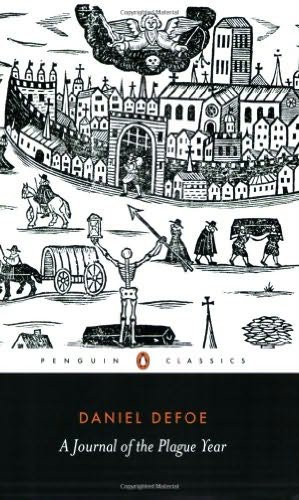|
A JOURNAL OF THE PLAGUE YEAR

One of the features that made Defoe’s Robinson Crusoe so successful was certainly its journalistic style, which he was to use at its best some years later, in “A Journal of the Plague Year” [E1] [E2] [E3] [I1] [F1] [ES1] .
Published in 1722, the book is an account of the bubonic plague that attacked London in 1665. The terrible disease, as we read in Evelyn and Pepys, and as we learn from the very first page of the Journal, reached England from Holland, where it had raged for the previous two years, and definitely ended in 1666, when the Great Fire finally “burnt it away”.
The pretext to write his book was offered to Defoe in 1721 when some cases of plague broke out again in France, re-awakening fears and memories of the past. The frightful event became topical at once, and Defoe, with his flair for scoops, realized all the possible advantages connected with this outbreak. In keeping with his theory on fiction, he decided to write a work as true to history as possible but, at the same time, devoid of all the material that made documentary works leaden and uninteresting.
So he imagined that a London merchant, virtually isolated in the city during the plague, kept a journal of all the public and private events that took place there. The book is therefore written in the first person singular, like many others by Defoe, and reads like an actual eye-witness’s account reinforced by the fact that it closes with a kind of signature, the initials H.F., which may stand for Henry Foe, an uncle of Daniel’s, who was about thirty-seven in 1665.
Daniel himself, in fact, was only five or six years old in the years of the pestilence, too young to remember anything precise, so he had to base his book on the remembrances of the few old survivors still living in London. Uncle Henry may therefore have provided the first, though imperfect, direct memories of the event, which Defoe completed with other reminiscences picked up in inns and coffee-houses and, above all, with documents consulted in the town archives. Then he blended the whole with his creative imagination and his prodigious talent, thus producing a work which combined information, anecdotes, precepts, regulations, statistics, shocking details and moving episodes, in a style which was always realistic and detached.
 7/15
7/15

|